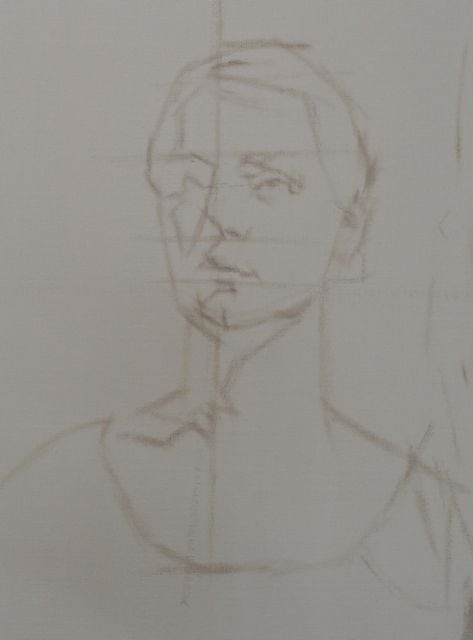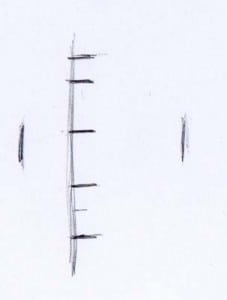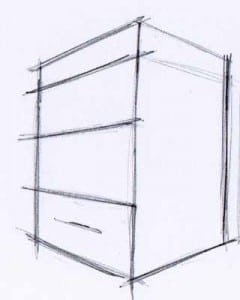Placement, Size, Proportion and perspective
The more time you invest in detail and the more definite the marks you make in this initial stage the less likely you are to change your mistakes.
You are Looking for light broad straight lines, approximations, the focus is on measuring, proportions, alignments, reference points (were angles meet), changes in direction, not getting involved with detail. Allowing for a state of flux.
Placement,
Place the head off the centre of the canvas, to give space for direction of the face to look into.
You need to fit the composition within the canvas.
Allow for size of head and enough room below the shoulders.
Size.
Length of head,
6-7in or 15-18cm, around a hand span,
Smaller rather than bigger, gives the impression of looking through the picture plane. Only bigger if going in a large room conference hall etc.
Subject at eye level or higher,
Width of head,
Measure the width compared to the length of head. Place the width of head off centre to the middle of the canvas
Plumb line
After head is placed,
Draw a vertical line down the face, cutting through the maximum reference points. I.E. tear duct, side of nostril, corner of mouth.
Sketchy lines.
Use a DRY brush with no medium dipped in paint and dried of on a cloth, dark enough to register to the eye.
Use straight lines, they add strength and are architectural.
[tubepress video=”RtJr79JtAfQ”]
Brush
Use a 1/3 inch brush, we are not being definite at this stage, looking for broad measurements.
Proportion
Create an armature to base measurements on,
The face can be roughly divided into thirds.
Divide the length of the head into 3 and a 1/2 units.
Width = 3 units
Face;
1 unit = hair line to top of eye brow.
2 unit = top of eye brow to bottom of nose.
3 unit = bottom of nose to line of the chin.
Now search for proportional differences, within the head. Few people’s heads are in proportion so now you can find the differences.
Should look like this
Comparative Measuring.
It just means to compare measurements in relation to each other.
You can now use your dividing lines to measure the rest of the face.
Unit of measurement.
You can use the length between the top of the eye brow to the bottom of nose as a unit to compare distances of the face. Or you could use the distance of the top of the eye brow to chin to measure a greater distance.
Use of plumb line,
you can use your plumb line to determine widths of the face using your units of measurement.
Perspective of Face,
Sitter should be on the eye line or above. Remember looking at a picture frame is like looking through a window.
The laws of perspective need to be observed,
Status of the sitter.
If the subject is eye level then that is equal.
Looking up is Reverence.
Looking down is beneath you
Rules of perspective all parallel lines converge (even in a face).


